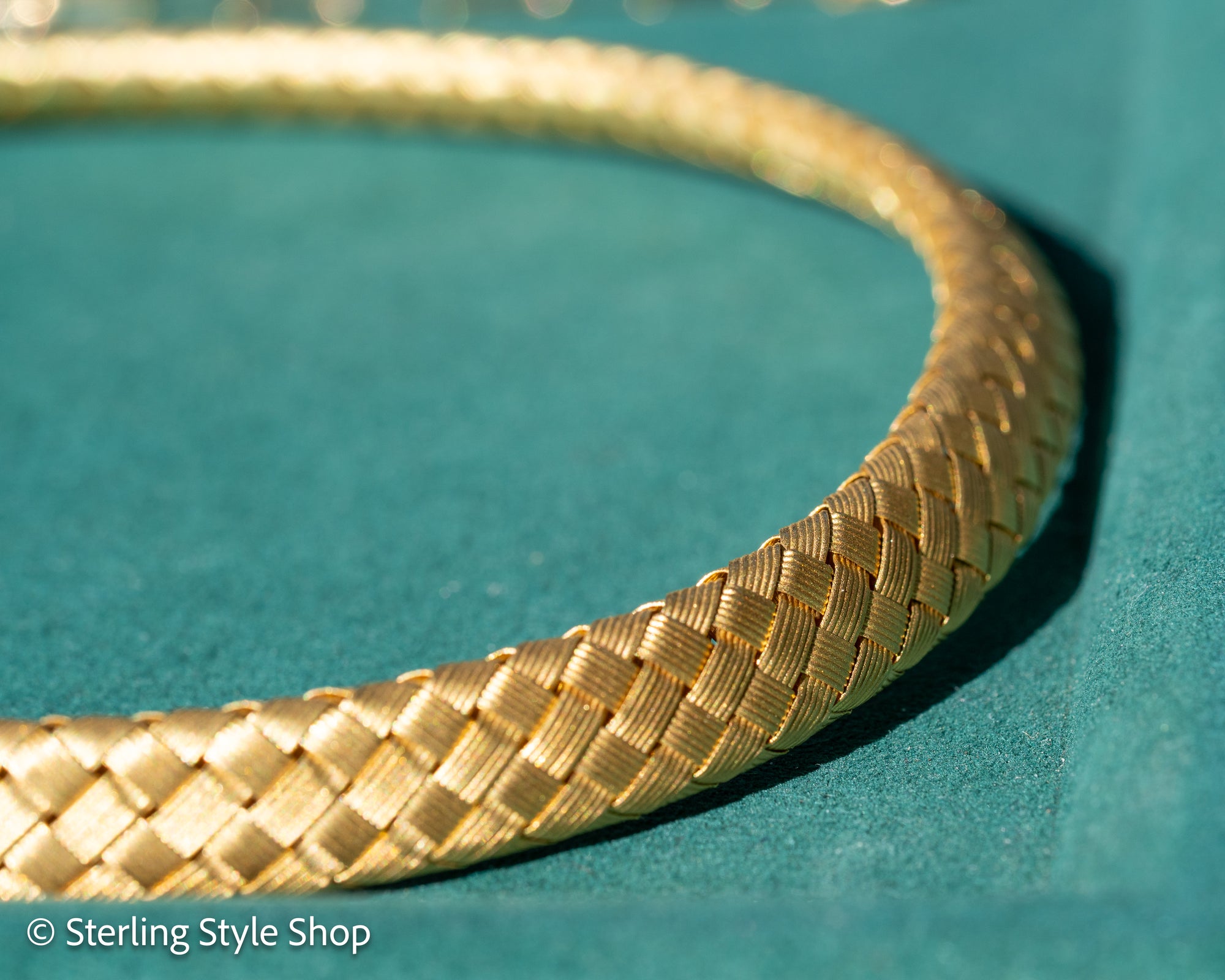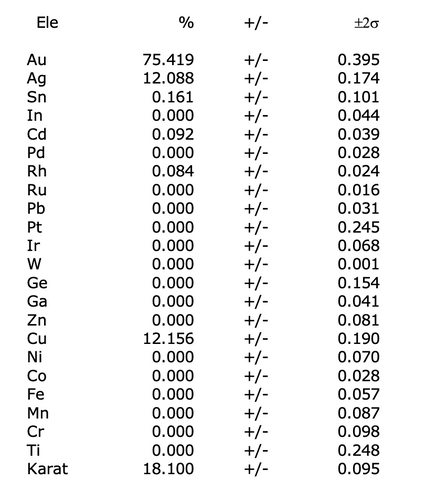About the XRF Report

We’re thrilled you’ve chosen a unique piece from our store! Along with your jewelry, you’ll find an XRF (X-ray fluorescence) analysis report. Here’s what it means and why it matters.
What is XRF?
XRF stands for X-ray fluorescence, a scientific method used to determine the exact metal composition of an item — quickly, safely, and without damage.
- A beam of X-rays is directed at the jewelry.
- Each element in the metal gives off a unique “signature” of energy.
The XRF device reads these signatures and calculates the percentage of each metal present.
Why it matters
Sometimes metals look like gold but are not gold, or can be a less expensive metal covered in a layer of gold as thin as a couple micrometers. These can be very difficult to identify even for experienced jewelers. One of the best ways of testing metals without melting it is with the XRF technology.
At Sterling Style Shop we use the XRF as part of a multi layer strategy to make sure customers are getting what they expect. We provide this information to you so that you can rest assured your jewelry has been hand curated, tested, and you are getting what .
What it means
Each row in your XRF report shows three key pieces of information:
- Element Symbol – The chemical symbol for the element detected (e.g., Au = Gold, Ag = Silver, Cu = Copper). See the included table for a quick guide to commonly found elements in jewelry alloys.
- Percentage (%) – The proportion of that element in the tested area. This is the critical number for confirming whether a piece contains the expected amount of precious metal based on the stated karat or purity.
- Precision (±2σ) – This number shows how much the result might vary if the same spot were tested repeatedly. It is expressed directly as a percentage. For example, if gold is reported as 75.0% with a precision of ±0.5%, that means 95% of repeat tests of the same spot would fall between 74.5% and 75.5%. A precision value of ±0.5% or less is considered very consistent for jewelry testing.
What percentage should I see?
The percentage you see on your XRF results will depend on the anticipated purity of the jewelry. Here are two reference charts for common gold and silver purity levels:
Common Gold Purity Levels
| Karat | % Pure Gold | Notes |
|---|---|---|
| 24K Fine | 99.9%+ | Pure gold; very soft and malleable, not ideal for daily wear. |
| 22K | 91.7% | Rich, deep yellow; popular in Indian, Middle Eastern, and Asian jewelry. |
| 18K | 75.0% | High purity with excellent durability; favored in fine jewelry. |
| 14K | 58.3% | Durable and affordable; widely used in U.S. jewelry. |
| 10K | 41.7% | The minimum legal karat for gold in the U.S.; paler color but very strong. |
Silver Purity & Common Markings
| Purity Level | % Pure Silver | Notes |
|---|---|---|
| Fine Silver | 99.9% | Very soft; rarely used for everyday-wear jewelry. |
| Britannia Silver | 95.8% | Used in the UK for high-grade silverware and jewelry. |
| Sterling Silver | 92.5% | Industry standard; strengthened with copper (often stamped “925”). |
| Coin Silver | 90% | Historically used in U.S. coins and some vintage jewelry. |
| Mexican Silver | 92.5–95% | Common in artisan jewelry from Mexico; often marked “925” or “950.” |
| 800 Silver | 80% | Found in antique European pieces; typically stamped “800.” |
An Example
To better understand how to interpret your XRF results, let’s take a closer look at an example report.

In this report from an 18K necklace, we see the gold content is measured at 75.419% Au. The precision value (±0.395%) means that if you were to test this same spot again, 95% of the time the result would fall between ~75.0% and 75.8% Au. This shows the reading is very consistent. Remember we're looking for less than or equal to .5 in this column.
Next, you can see that silver (Ag) makes up 12.088% of the metal, and copper (Cu) makes up 12.156%. These other elements are normal parts of the alloy that give the jewelry its color, hardness, and durability.
Finally, you might see other elements that show up in tiny quantities, these are either trace elements in the metal or background noise from the testing environment.
I thought it was 18k but it's not exactly 75% Gold?
An 18K piece is defined as containing 75% pure gold, but in practice the exact percentage can vary slightly. Modern alloys are usually very close to that mark, while antique jewelry may show small variations because of historical refining and casting methods, or later repairs using solder. On an XRF report, it’s normal to see results for 18K jewelry anywhere in the range of about 74% to 76% gold. Readings within that window are consistent with genuine 18K.
So what are all these other elements?
Here's a table of elements that commonly appear in jewelry:
Common Alloying Elements in Jewelry
| Element | Why It’s Used | Common in |
|---|---|---|
| Copper (Cu) | Strengthens the metal; adds warm/red tone; essential for rose gold. | Both |
| Silver (Ag) | Lightens gold’s color; key component in sterling silver alloys. | Both |
| Zinc (Zn) | Improves castability and reduces oxidation during melting. | Both |
| Palladium (Pd) | Whitens gold in white-gold alloys; adds corrosion resistance. | Gold |
| Platinum (Pt) | Adds weight, durability, and a bright white tone to gold alloys. | Gold |
| Nickel (Ni) | Whitens gold in older white-gold alloys (now often avoided due to allergies). | Gold |
| Tin (Sn) | Used in some silver solders; improves flow during repair work. | Silver |
| Indium (In) | Enhances tarnish resistance in some modern silver alloys. | Silver |
| Lead (Pb) | Rare in modern jewelry; may appear in antique solder joints (now avoided for safety). | Silver |
| Cadmium (Cd) | Once used in solders for its low melting point; avoided today for toxicity. | Both |
| Iron (Fe) | Sometimes present in trace amounts in antique alloys or as impurities. | Both |